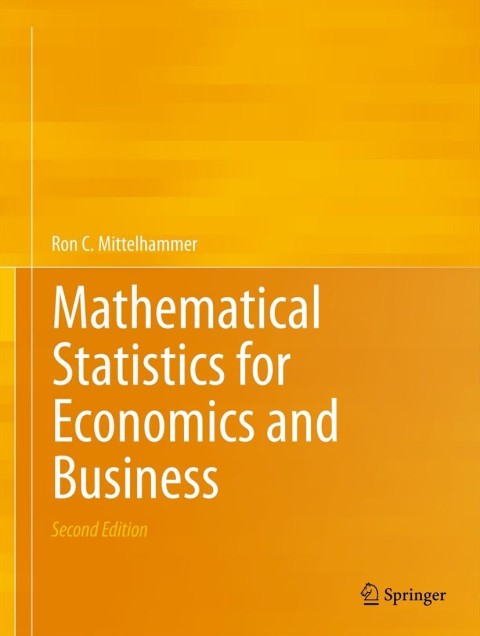A large commercial bank intends to analyze the accuracy with which their bank tellers process cash transactions.
Question:
A large commercial bank intends to analyze the accuracy with which their bank tellers process cash transactions. In particular, it desires an estimate of the expected proportion of daily cash transactions that the bank tellers process correctly. It plans to analyze 200 past observations on the daily proportion of correct cash transactions by the tellers, and specify the statistical model underlying the daily observations as:
\(f(z ; \alpha)=\alpha z^{\alpha-1} I_{(0,1)}(z), \quad \alpha \in(0, \infty)\)
(i.e., \(f(z ; \alpha)\) is a beta density function with \(\beta=1\) ).
(a) Define the maximum likelihood estimator of \(\alpha\).
(b) Show that the MLE is a function of the complete sufficient statistic for this problem.
(c) Is the MLE of \(\alpha\) a consistent estimator?
(d) It can be shown (you don't have to) that
\[\mathrm{E}\left(\sum_{i=1}^{n} \ln \left(\mathbf{X}_{i}ight)ight)^{-1}=-\alpha /(n-1) .\]
(See W.C. Guenther (1967), "A best statistic with variance Not Equal to the Cramer-Rao lower bound," American Mathematical Monthly, 74, pp. 993-994, or else you can derive the density of \(\left(\sum_{i=1}^{n} \ln \left(\mathbf{X}_{i}ight)ight)^{-1}\) and find its expectations-the density of \(\sum_{i=1}^{n} \ln \left(\mathbf{X}_{i}ight)\) is the mirror image (around the vertical axis at zero) of a Gamma density). Is the MLE the MVUE for \(\alpha\) ? If not, is there a function of the MLE that is MVUE for \(\alpha\) ?
(e) Show that the MLE is asymptotically normal and asymptotically efficient, where \(n^{1 / 2}(\hat{\alpha}-\alpha) \xrightarrow{\mathrm{d}} N\left(0, \alpha^{2}ight)\).
(f) Define the MLE of \(q(\alpha)=\alpha /(\alpha+1)\), which is the expected proportion of correct cash transactions.
(g) Is the MLE of \(q(\alpha)\) a consistent estimator?
(h) Is the MLE of \(q(\alpha)\) asymptotically normal and asymptotically efficient? If so, define the asymptotic distribution of the MLE estimator.
(i) The outcome of the sufficient statistic was \(\sum_{i=1}^{n} \ln \left(\mathbf{x}_{i}ight)=-9.725\).
Calculate the maximum likelihood estimate \(\alpha\). Calculate the estimate of \(\alpha\) using the MVUE of \(\alpha\).
(j) Calculate the maximum likelihood estimate of \(q(\alpha)=\alpha /(\alpha+1)\), the expected proportion of correct transactions.
(k) Calculate the maximum likelihood estimate of the probability that there will be greater than or equal to 97 percent correct cash transactions on a given day. (Hint: Determine the appropriate function of \(\alpha\) in this case, and use the invariance principle.)
Step by Step Answer:

Mathematical Statistics For Economics And Business
ISBN: 9781461450221
2nd Edition
Authors: Ron C.Mittelhammer





